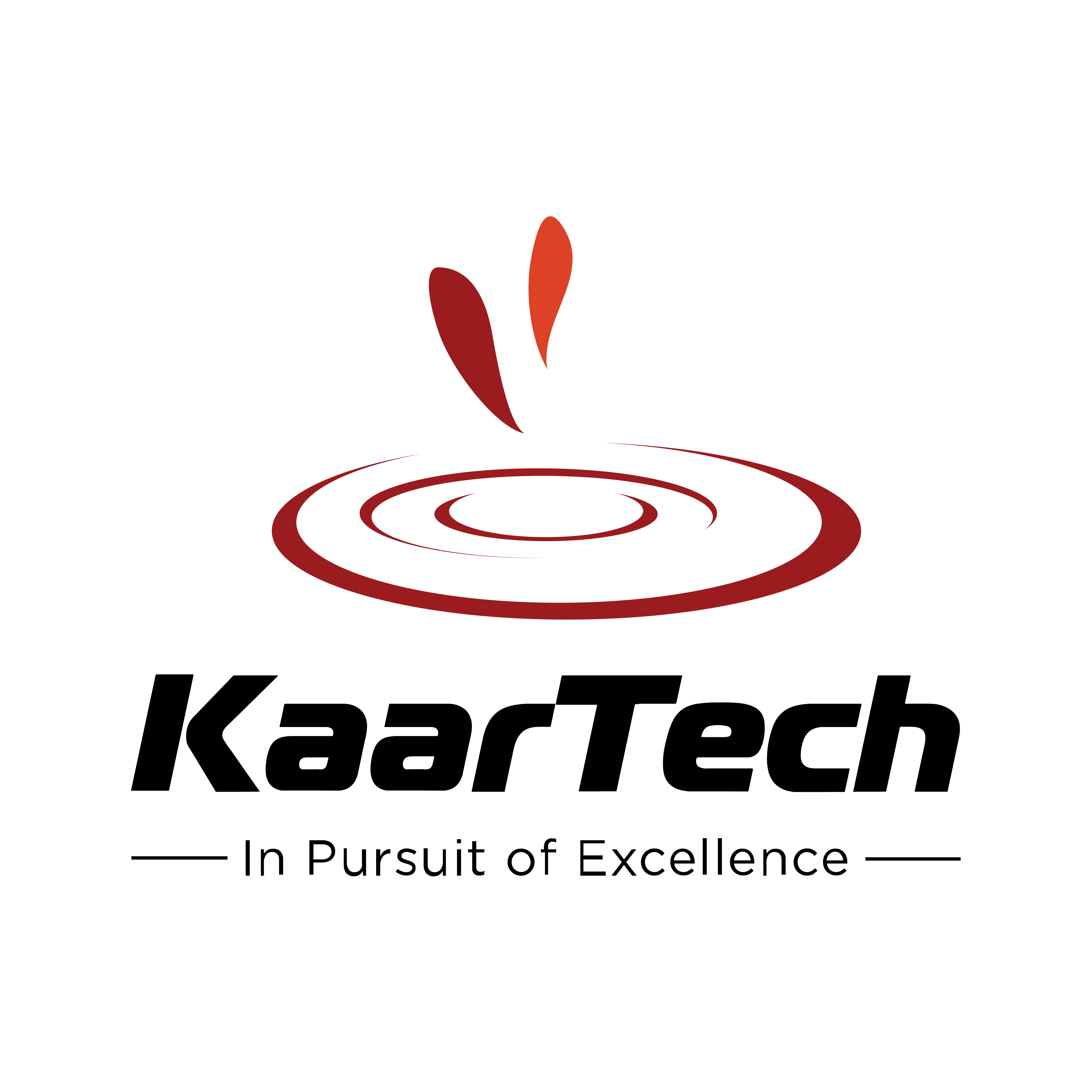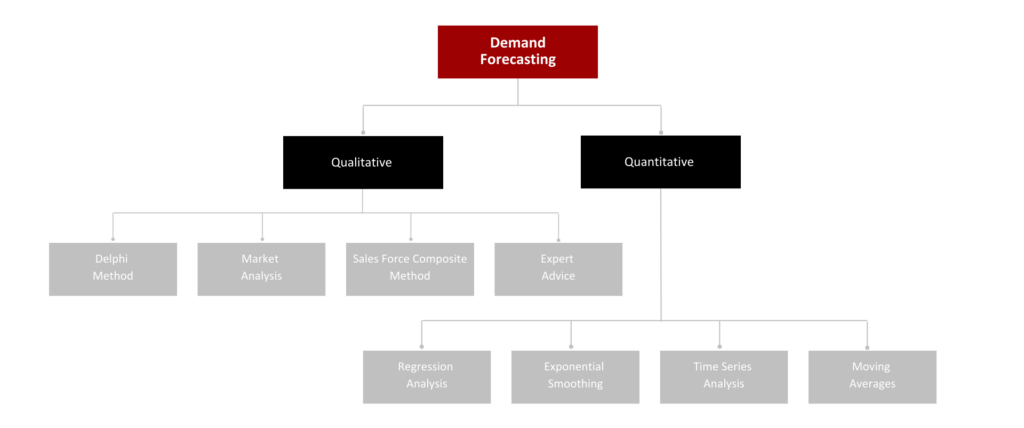Demand Forecasting: Everything You Need to Know

Introduction
Demand forecasting: is it a mystical crystal ball with the capacity to unlock corporate success, or is it a data-driven, strategic approach to sales and inventory management?
Understanding and predicting customer demands is no longer a luxury in today’s fast-paced and ever-changing business world.
In this blog, we will discuss demand forecasting approaches, disclose the secrets of mastering demand forecasting, and start you on the way to exploding sales and simplified inventory management.
This blog will help you stay ahead of the curve by demystifying the complicated world of demand forecasting by studying qualitative and quantitative methodologies, including some advanced machine learning models.
We will also walk you through the benefits of precise demand forecasting and provide you with the best tools and software advice to help you make better business decisions.
What is Demand Forecasting?
Demand forecasting is an important component of business operations since it allows businesses to forecast client demand, optimize inventory management, and increase sales. Businesses can stay ahead of the curve and make informed decisions by mastering both qualitative and quantitative methodologies.
Predicting the desires and requirements of existing and potential customers enables organizations to identify sales opportunities, plan inventory levels, develop marketing strategies, and make sound business decisions – all with the goal of reducing costs and increasing profits in the long run.
This is where demand forecasting comes into play. This discipline consists of qualitative and quantitative methods for modeling customer behavior in order for businesses to make more accurate predictions about demand levels and adjust their business plans accordingly.
The Rise of Qualitative Methodologies:
Businesses began to use qualitative forecasting approaches after realizing the limits of solely intuitive forecasting. Qualitative forecasting methodologies pioneered a more systematic approach to understanding and forecasting demand. These strategies included obtaining expert opinions, performing market research, and taking into account a variety of external factors that can influence demand, such as economic trends, consumer behaviour, and industry advancements.
- The Delphi Method
A common demand forecasting approach that relies on the experience of an industry panel of authority persons. The Delphi technique entails soliciting expert opinions on certain market aspects or trends in order to forecast future client demand.
Their replies are gathered and analyzed, and a consensus prediction is made. Iteratively, the procedure is repeated until a suitable degree of agreement is obtained, resulting in a reliable and informed demand prediction.
- Market Analysis
Evaluating the feasibility of a new or updated product or service through direct consumer research helps firms to get a comprehensive insight of customer expectations, preferences, and behaviors.
The collected data can then be utilized to assess the likelihood of a product launch or marketing campaign’s success, as well as to get an understanding of altering consumer trends. This, in turn, allows for more precise forecasting of future demand, allowing for suitable optimization of manufacturing, inventory levels, and sales.
- Sales Force Composite Method
This demand forecasting approach requests estimates from sales team members based on direct encounters with clients, market knowledge, and sales experience at the organization. Individual estimations are then pooled and improved to produce a comprehensive demand prediction that can be used to plan inventory purchases and marketing activities.
- Expert Advice
Businesses aiming to optimize demand forecasting and increase their competitive edge could benefit from the perspectives of industry specialists or internal business forecasting teams. To forecast future trends, these specialists examine the existing market environment, including aspects such as the economic outlook and market growth estimates.
The Rise of Quantitative Methodologies:
While qualitative methods rely on decision-makers’ views, deductive procedures rely on objective metrics to forecast demand. Quantitative forecasting approaches are thus appropriate for scenarios with a considerable quantity of historical data for mathematical modeling and statistical analysis.
Econometric frameworks analyze the connections between various customer demand characteristics such as seasonality, price sensitivity, and consumer behavior. This type of analysis can uncover correlations that can subsequently be utilized to create predictive models, allowing firms to anticipate swings in demand and optimize their operations appropriately.
- Time Series Analysis
A quantitative approach that extrapolates forward in time by using previous data points gathered during a specific time period. This approach can be used to forecast client demand and identify repeating trends if it is based on trustworthy, up-to-date data.
Time series analysis detects underlying patterns in data, such as seasonal or cyclical variations, and utilizes them to develop models that predict future behavior. The predicted values obtained by this form of predictive model can subsequently be used by businesses for short-term demand forecasting and inventory planning.
- Regression Analysis
This statistical approach is used to investigate the relationships between demand and one or more independent variables, such as price, advertising expenditure, or economic indicators.
Regression analysis plots data on a graph and calculates the line of greatest fit between the points using statistical methods. This regression line can then be used to forecast future demand based on changes in important elements such as price, seasonality, and other variables.
- Exponential Smoothing
A popular quantitative demand forecasting approach that uses weighted averages of historical demand to estimate future values, giving more weight to more recent data. A “smoothing constant” parameter determines the weighting factor, which can be changed to represent the relative importance of short-term vs long-term trends.
By giving more weight to recent data points, exponential smoothing can capture and respond to current changes in customer behavior while keeping lasting trends. As a result, this approach is great for forecasting peaks and troughs in otherwise continuous demand in order to optimize stock levels, save costs, and maximize sales.
- Moving Averages
A straightforward quantitative approach for determining the trend of a dataset by smoothing out oscillations and removing outliers. The moving averages approach computes the mean of data points over a set time period (or a particular amount of time), resulting in a smoother representation of the data from which to forecast future values.
Moving averages are especially effective for estimating demand over shorter time periods since they are more accurate than a simple mean in the presence of anomalies in the data. In this approach, organizations can adjust their supply chain and inventory levels in accordance with seasonal cycles rather than unpredictable changes.
Challenges in Demand Forecasting
Even with the greatest models in place, demand can be unpredictable and sensitive to a variety of external factors, making precise forecasting challenging. We will now look at some of the key challenges involved with demand forecasting so that you can learn how to deal with them.
- Data scarcity, inaccuracy, and other data limitations
Inaccurate or inadequate historical data can lead to inaccurate demand estimates, while a lack of information can cause models to underperform. As a result, data collection and management are crucial for providing accurate demand projections and supporting decision-making.
- Volatile Market Conditions
The buying patterns of consumers can be unexpected and change quickly as a result of external variables such as the economic condition and cultural trends. As a result, customer tastes shift over time, making it difficult for firms to estimate demand accurately.
Market-wide disruptions, such as pandemics or socioeconomic disasters, can also have a large impact on client demand, leading to a total shift in purchasing patterns in some situations. To maintain a competitive edge in such conditions, organizations must be flexible and responsive, employing both short-term and long-term demand forecasting strategies.
- Rapid Technological Advancement
In recent years, continuous innovations have modified client behaviors and tastes. Because of the constant flux of technological innovation, quick fluctuations in demand can frequently upset established forecasting methodologies and force the adoption of new alternatives.
Artificial intelligence, machine learning, and data analytics advancements, on the other hand, can provide more advanced demand forecasting methodologies that allow organizations to react to changing market conditions and stay ahead of the curve.
- Internal Company Resilience and Demand Forecast action
Businesses are frequently unable to make full use of their own projections due to an inherent inflexibility inside the organization that makes fast modifying procedures difficult.
Inability to adapt to changes in demand can lead to missed revenue, excess inventory, and worse profit margins.
Building resilience and building an adaptable culture inside a firm can increase the efficiency of demand forecasting efforts, allowing businesses to capitalize on new possibilities and adjust to variations in demand.
The Benefits of Accurate Demand Forecasting
The capacity to create exact predictions about customer behavior can deliver several benefits to firms, some of which will be discussed here.
- Increased Sales and Revenue
Accurate demand forecasting allows firms to optimize their production and inventory levels, as well as make better pricing and discounting decisions. This alignment enables businesses to better satisfy the demands of their customers and capitalize on market possibilities, resulting in increased profit margins and cash flow.
- Inventory Management Optimization and Waste Reduction
To get insight into the success of their supply chain operations, businesses must monitor their stock levels – how much is held on-site and in transit, as well as the pace of rotation. Effective demand forecasting helps the management of proper inventory levels, lowering the chance of stockouts or overstock situations and, as a result, saving waste.
- Improving Supply Chain Efficiency
Accurate demand projections enable firms to select the most efficient sourcing techniques and suppliers, increase collaboration with them, and shorten lead times. Improvements in supply chain efficiency can lead to shorter delivery times, increasing customer happiness in the process.
- Better Product Pricing
Businesses can better analyze the potential cost of their products or services based on predicted demand, market circumstances, and consumer trends if they have a strong grasp of client demand. Appropriate product pricing can therefore maximize revenue and contribute to healthy profit margins while fulfilling consumer expectations and developing loyalty.
- Enhanced Customer Satisfaction and Loyalty
Aligning supply and demand enables firms to more successfully satisfy their clients’ expectations in terms of providing a consistently high level of service and a wide choice of high-quality products. This alignment not only promotes client pleasure but also develops consumer loyalty, which can result in repeat business and, eventually, long-term success.
- Demand Forecasting Software and Tools
Implementing dependable solutions to automate forecasts, increase accuracy, and minimize time to market can benefit organizations. By leveraging past data to observe patterns in consumer behavior for detecting trends and possibilities, demand forecasting software can make the process more effective and precise.
Last Thought:
Finally, the evolution of demand forecasting has been a dynamic and transformational journey, reflecting the ever-changing business and technological world. The path of demand forecasting has been distinguished not just by technology advances, but also by a movement in thinking. In a world where unpredictability and volatility are the new norm, demand forecasting evolution is a crucial component of business success.
For queries or guidance on optimizing your demand forecasting processes, don’t hesitate to reach out to KaarTech. Our experts are ready to assist you on your journey toward enhanced accuracy and efficiency in demand forecasting.
FAQ’s
What is Demand Forecasting?
Demand forecasting is a strategic approach to predicting customer demands, optimizing inventory management, and increasing sales. It involves qualitative and quantitative methodologies to stay ahead in a fast-paced business world.
What are Qualitative Demand Forecasting Approaches?
Qualitative methodologies include the Delphi Method, Market Analysis, Sales Force Composite Method, and Expert Advice. These approaches rely on expert opinions, market research, and industry insights to forecast future customer demand.
What are Quantitative Demand Forecasting Approaches?
Quantitative methodologies involve Time Series Analysis, Regression Analysis, Exponential Smoothing, and Moving Averages. These data-driven approaches utilize historical data, statistical analysis, and mathematical modeling to predict future demand.
What are the Benefits of Accurate Demand Forecasting?
Accurate demand forecasting leads to increased sales and revenue, optimized inventory management, improved supply chain efficiency, better product pricing, and enhanced customer satisfaction and loyalty. It allows businesses to make informed decisions and stay competitive.


